Coag Case Study Questions
1/25
Earn XP
Description and Tags
Case Study Questions from 04/04/2025's Kahoot + Antiphospholipid Syndrome Case
Name | Mastery | Learn | Test | Matching | Spaced |
|---|
No study sessions yet.
26 Terms

What type of disorder does the patient have?
Primary Hemostasis Disorder
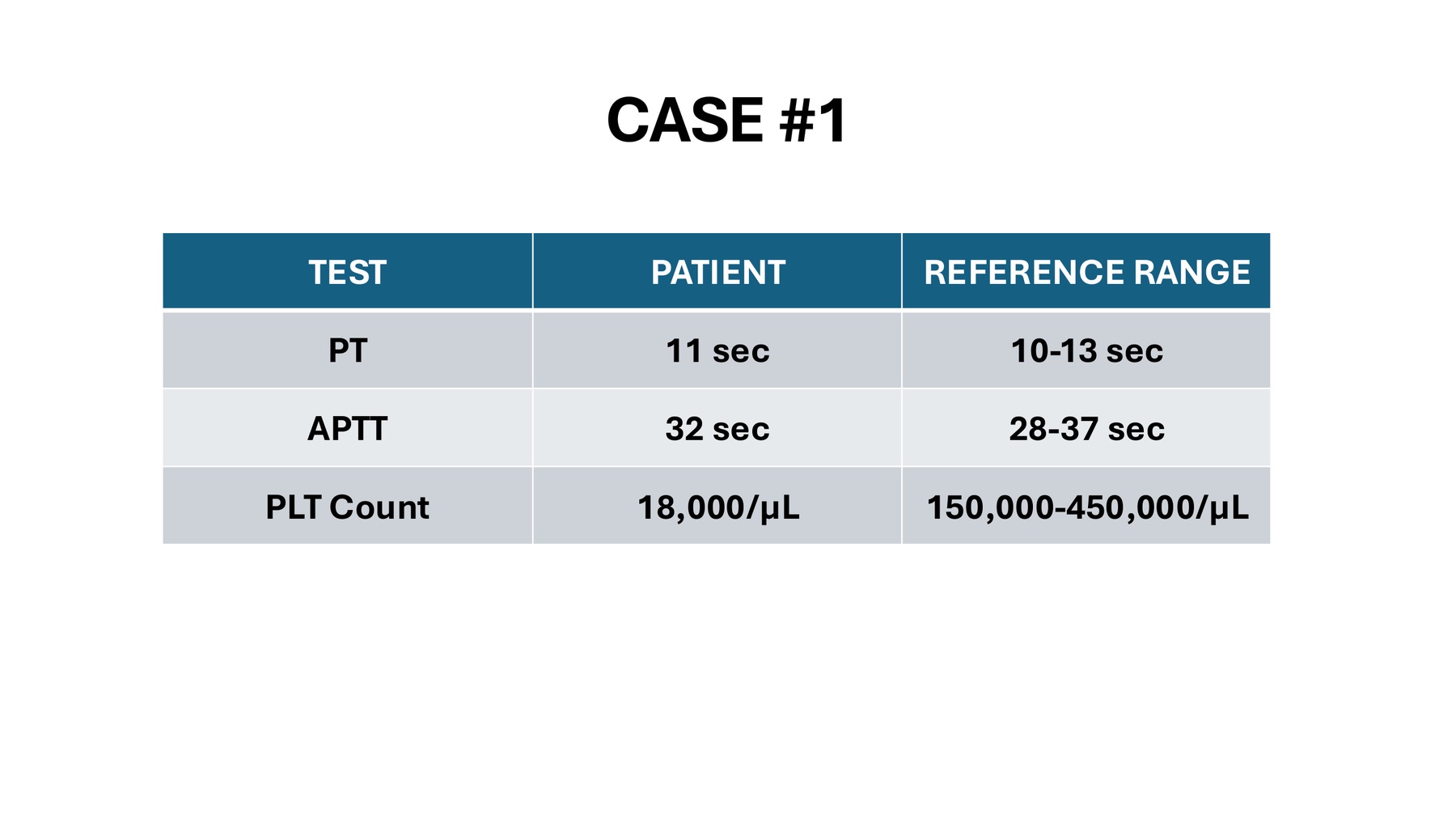
What is the final diagnosis?
Immune Thrombocytopenia (ITP)
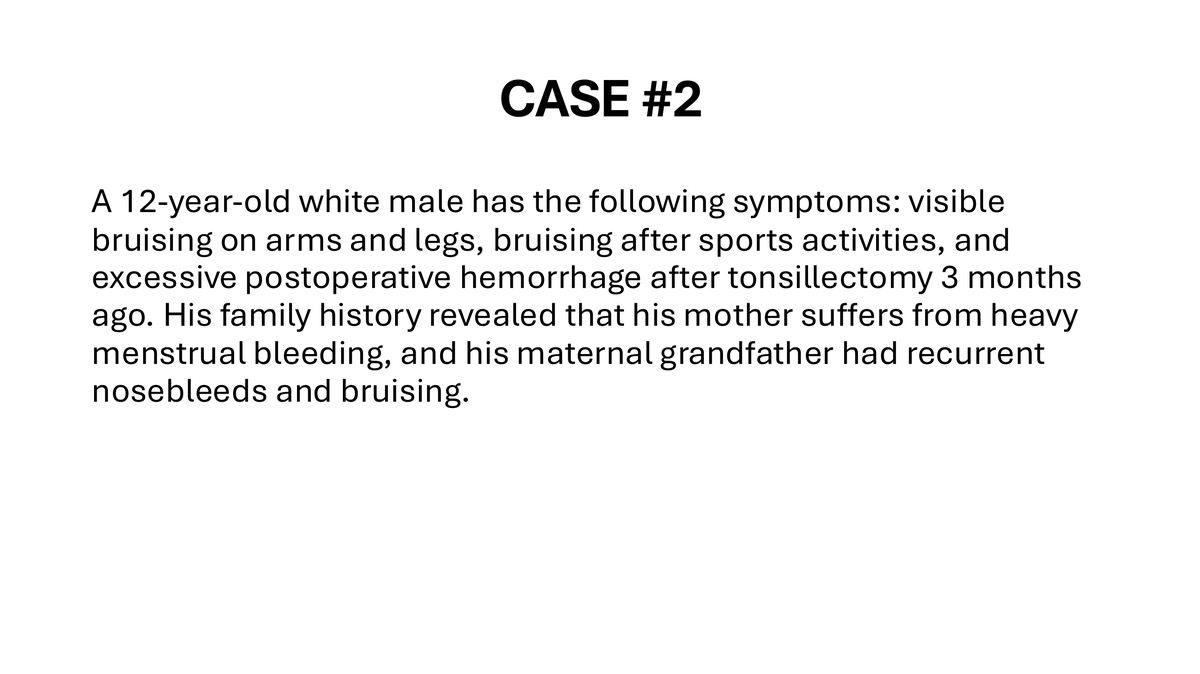
Inherited or Acquired?
Inherited
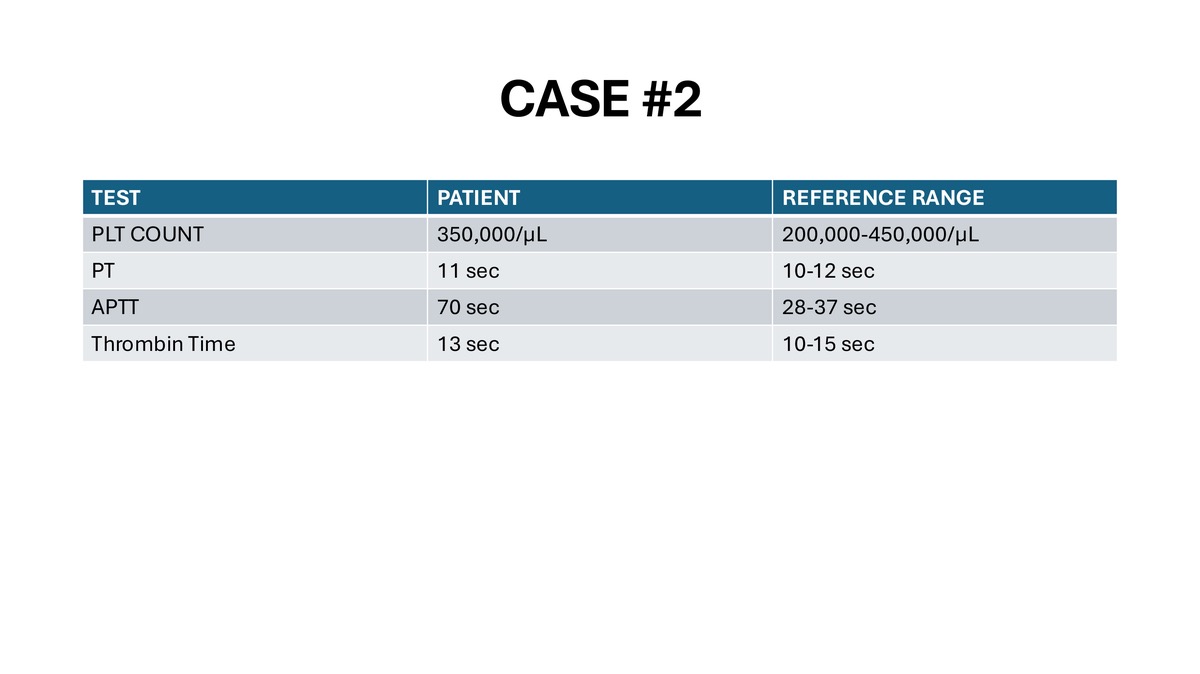
Based on the lab results, what deficiency could it be?
Intrinsic Pathway Deficiency
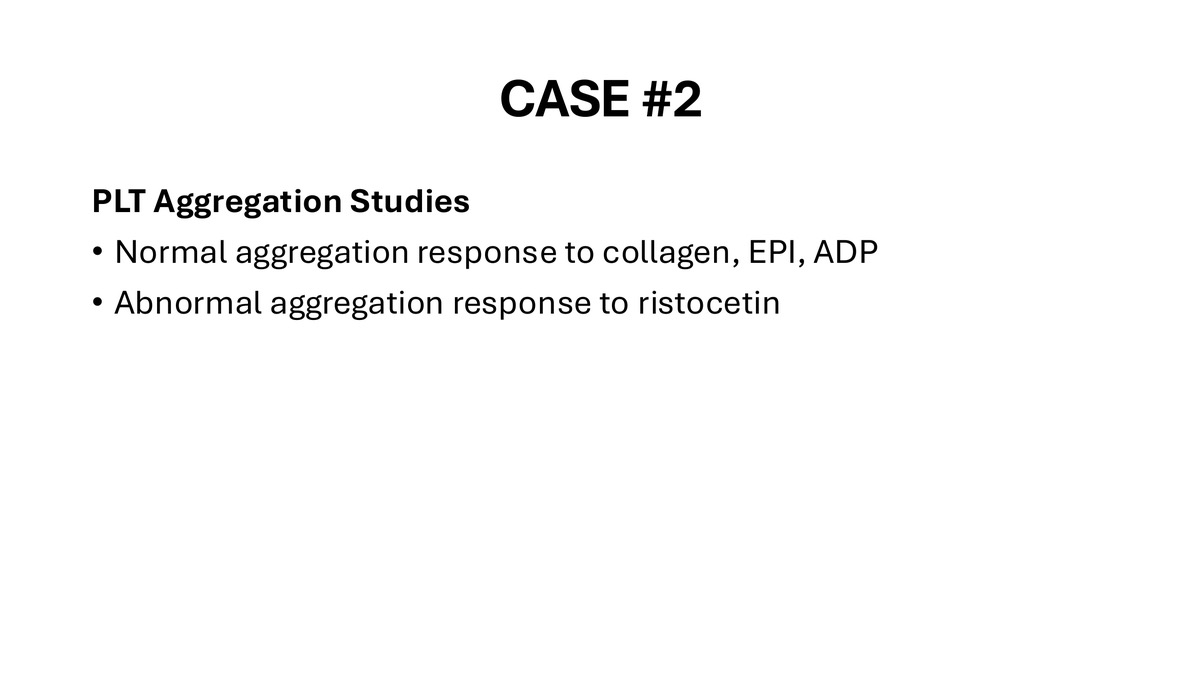
What is the possible diagnosis?
vWD
What are the 3 tests to confirm vWD?
Factor VII, vWF:RCo, vWF:Ag
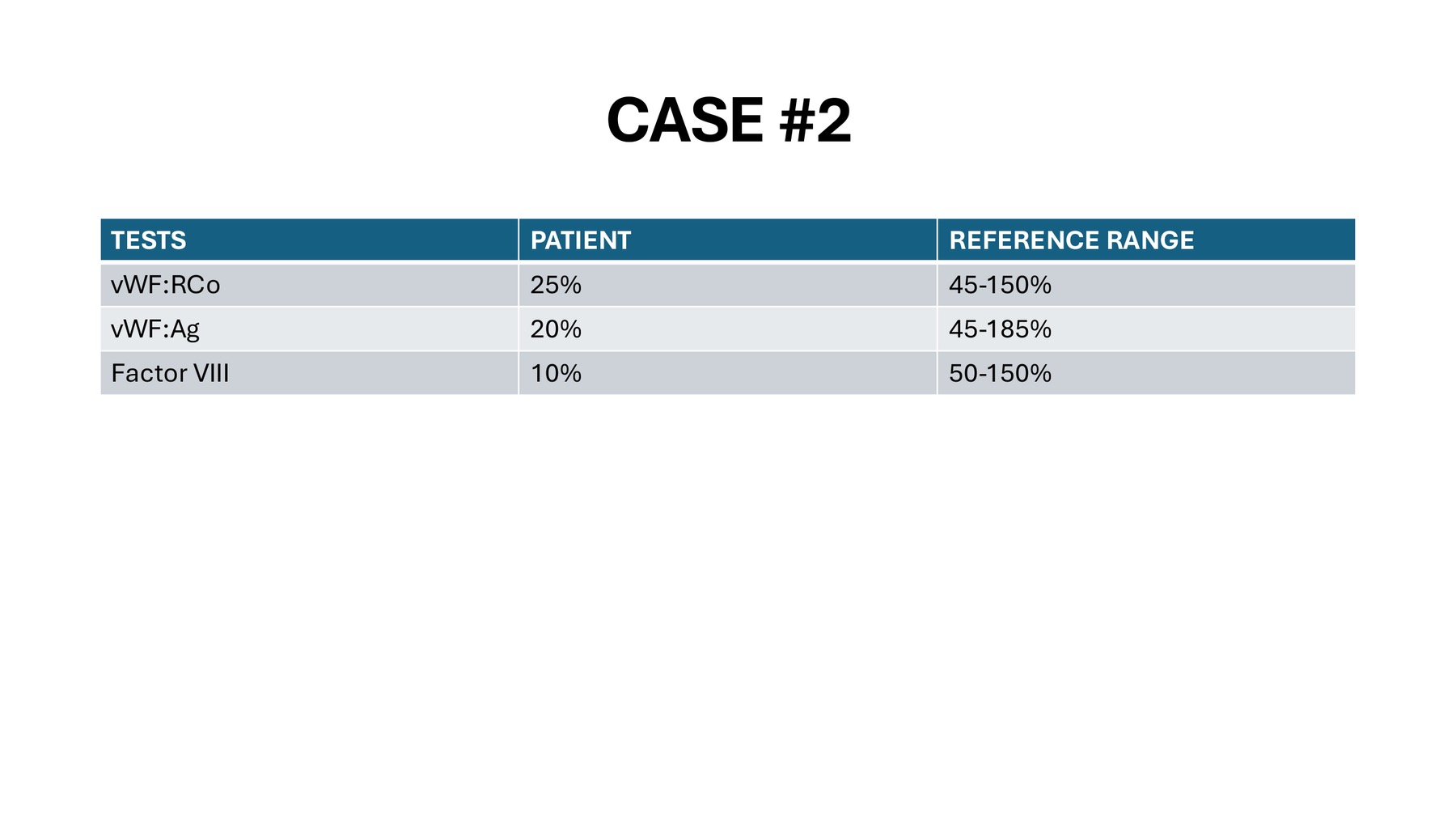
What is the Treatment for Type 1 vWD?
Desmopresin (DDAVP)
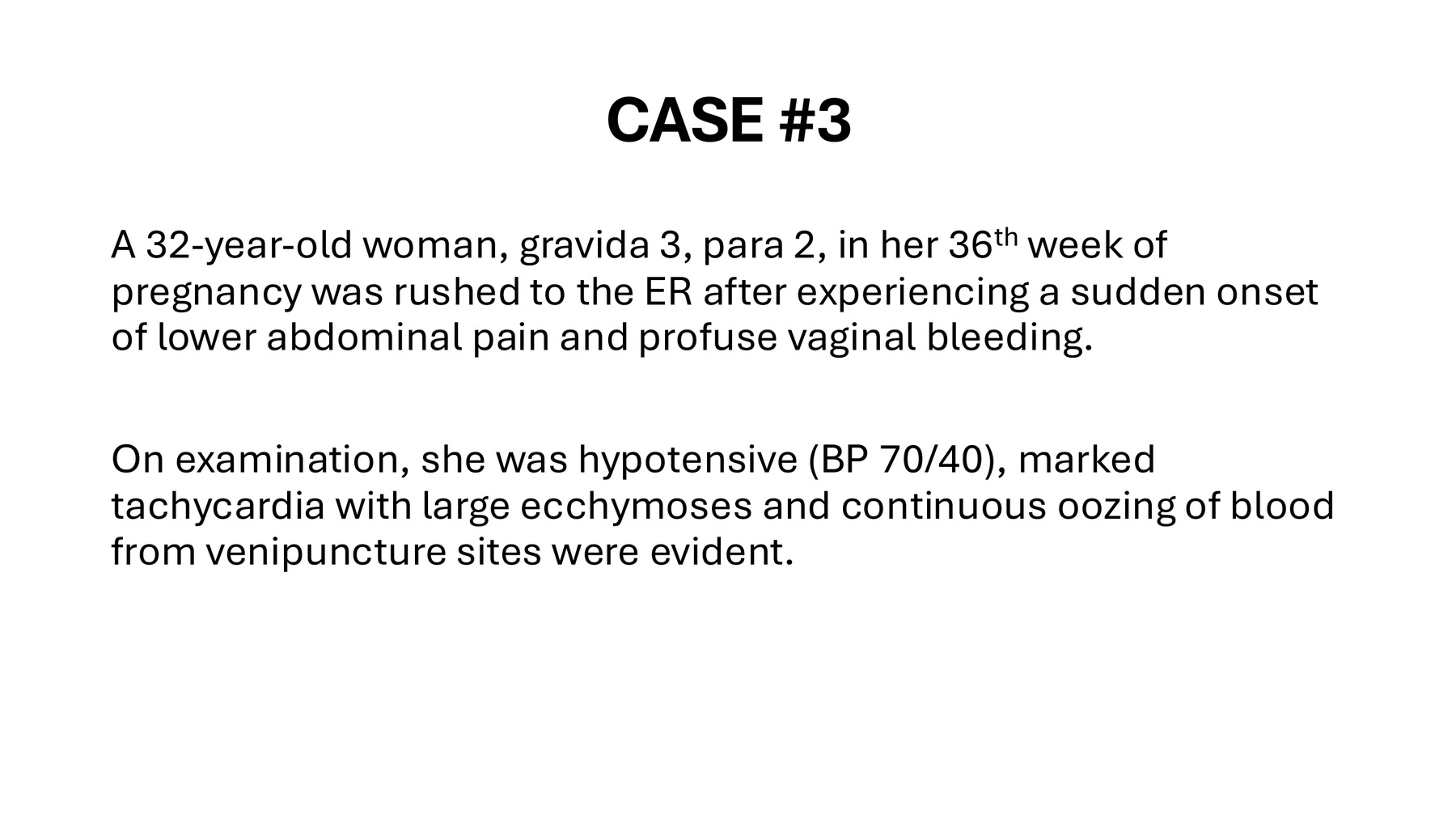
What 3 conditions do you see schistocytes on the smear?
Disseminated Intravascular Coagulation (DIC), Thrombotic Thrombocytopenic Purpura (TTP), and Hemolytic Uremic Syndrome (HUS)
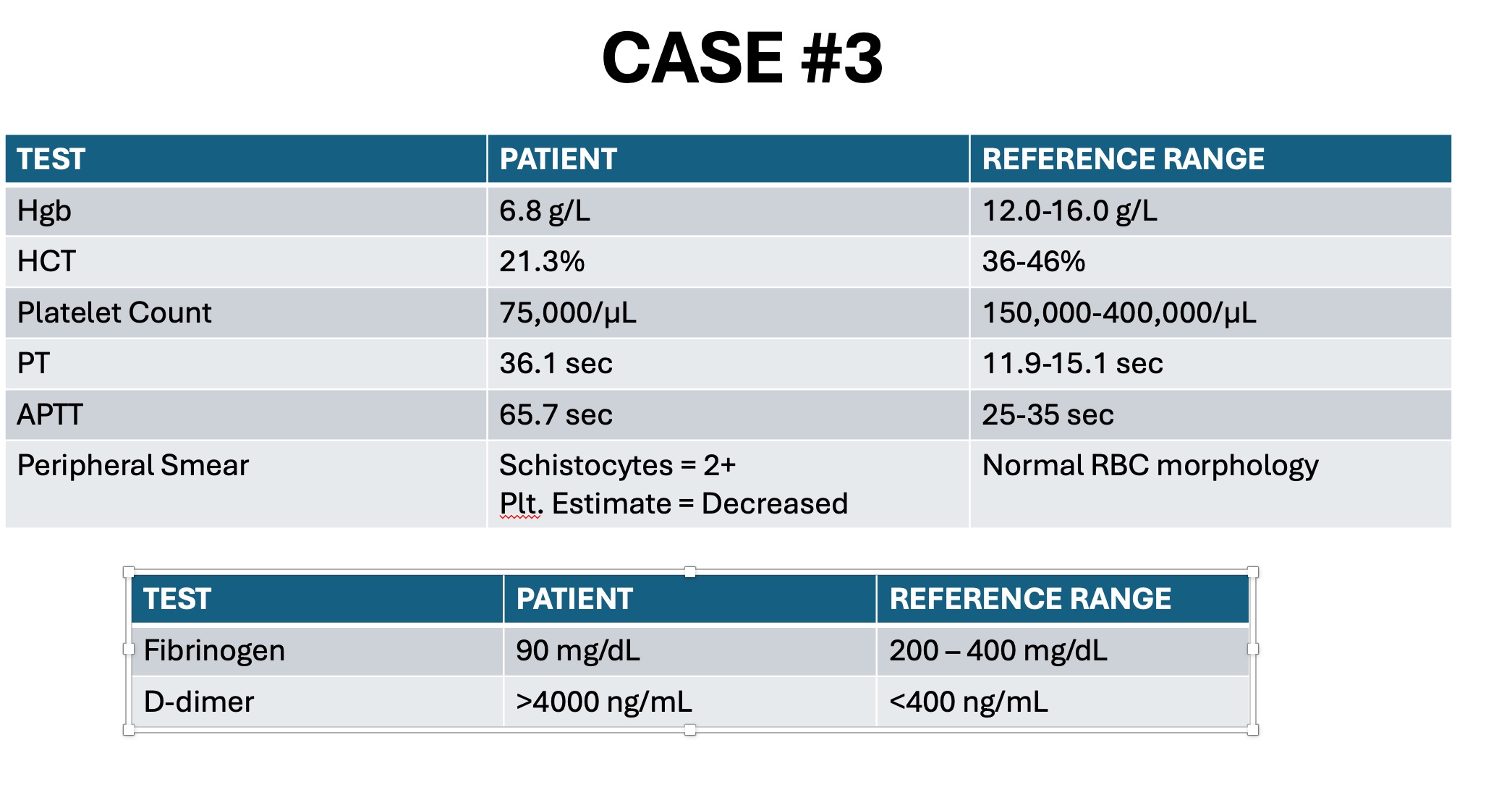
Based on the lab results, what is the diagnosis for this patient?
Disseminated Intravascular Coagulation (DIC)
For DIC, what is the treatment?
Deliver the baby
FFP
Platelets
pRBCs
IV fluids to maintain blood pressure
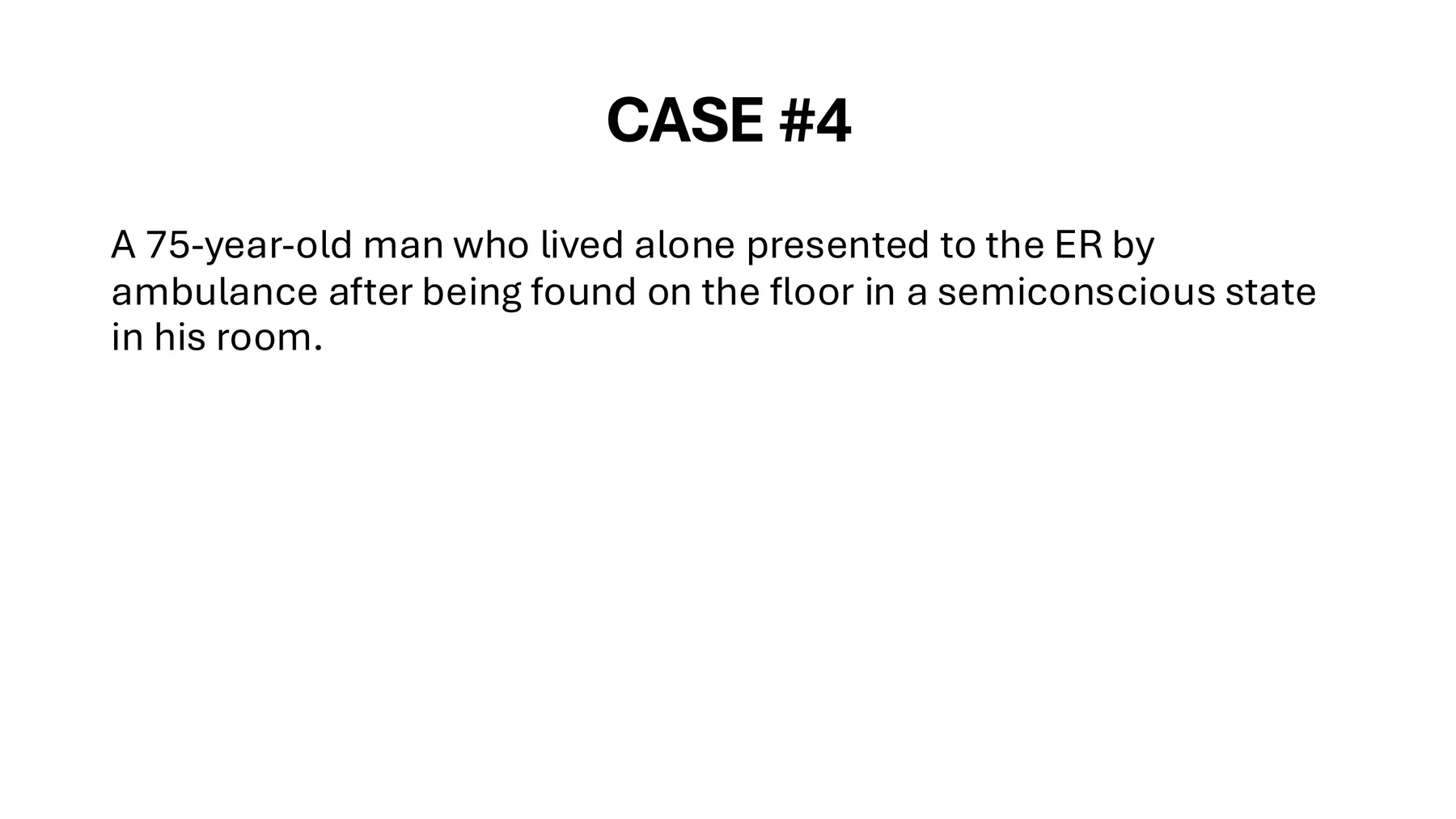
What could be the causes of an elevated PT with a normal APTT
Coumadin Therapy
Liver Disease
Vitamin K Deficiency
Factor VII Deficiency
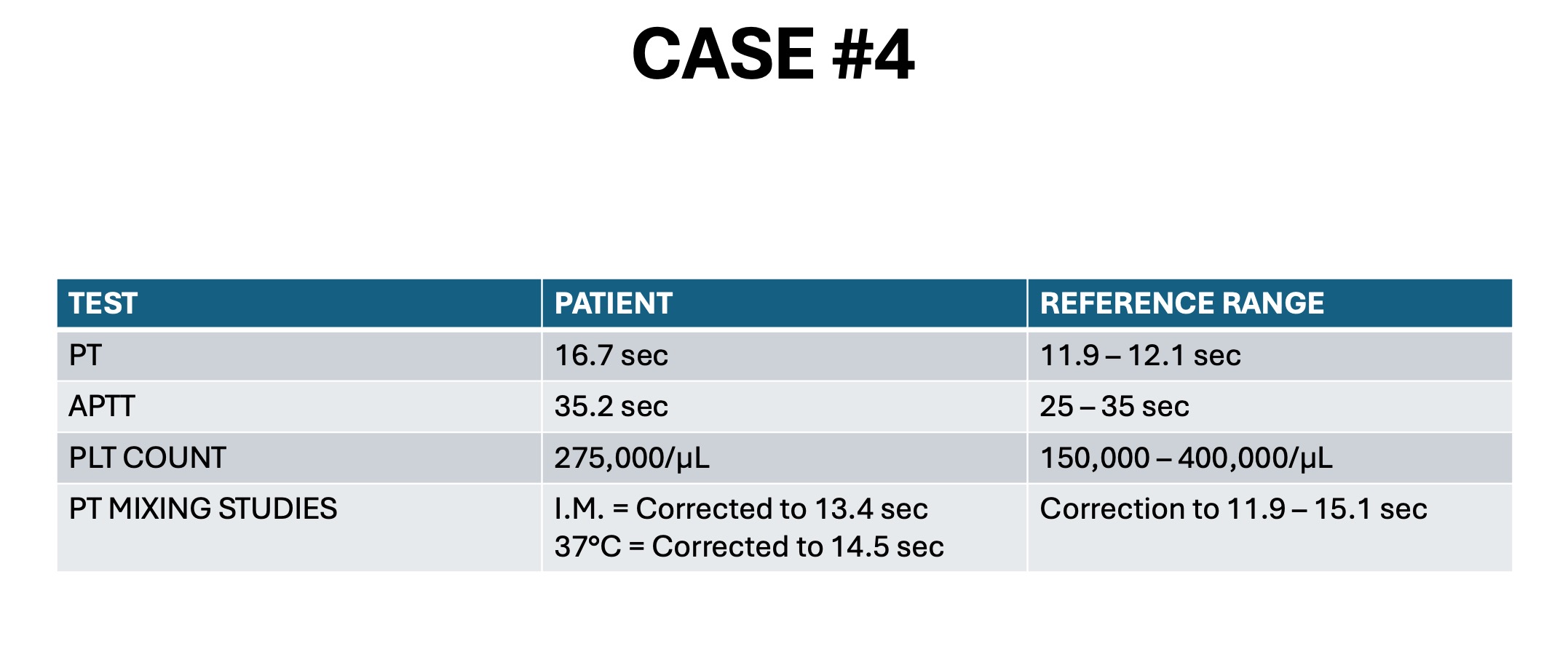
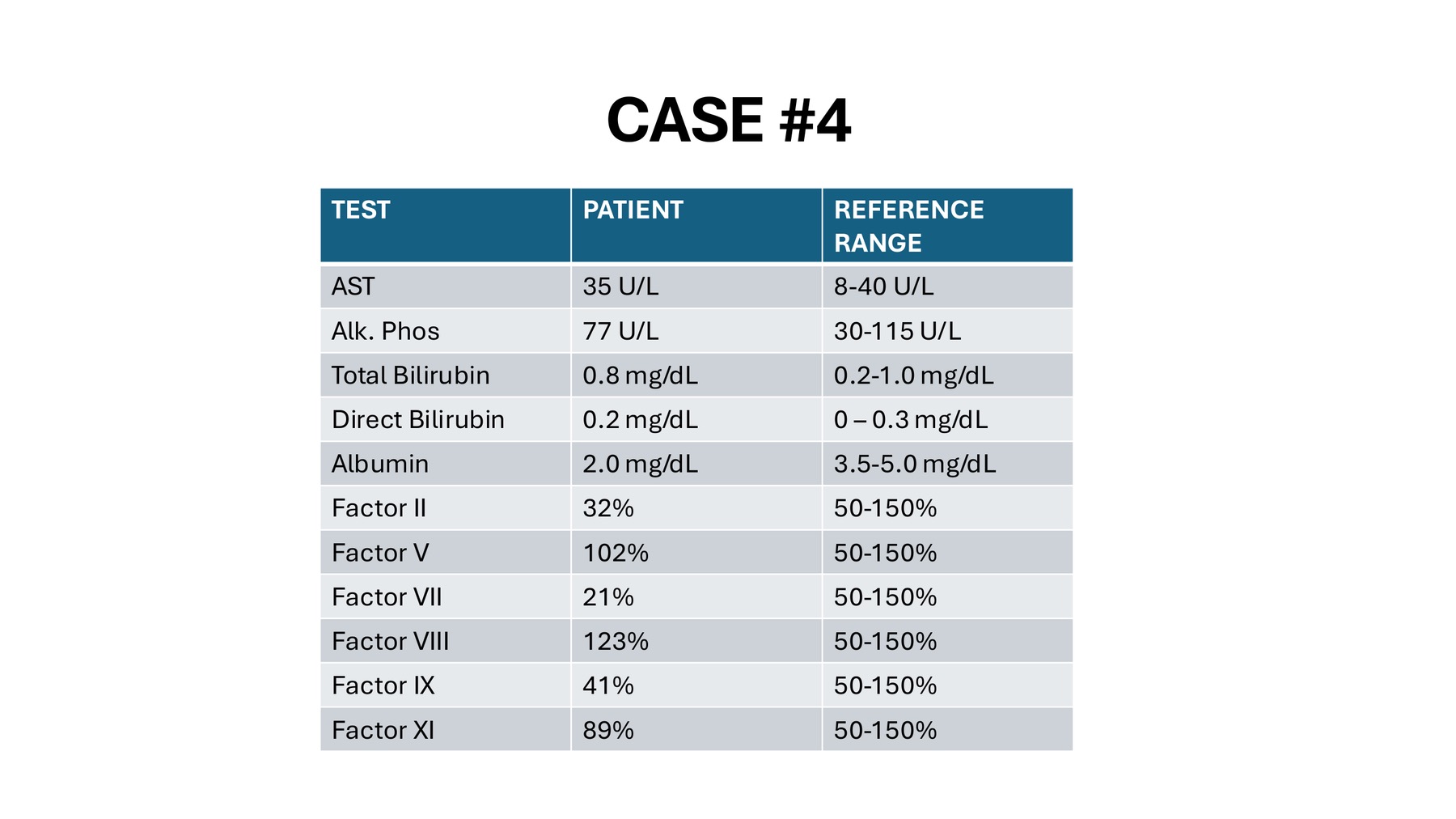
What is the final Diagnosis?
Vitamin K Deficiency
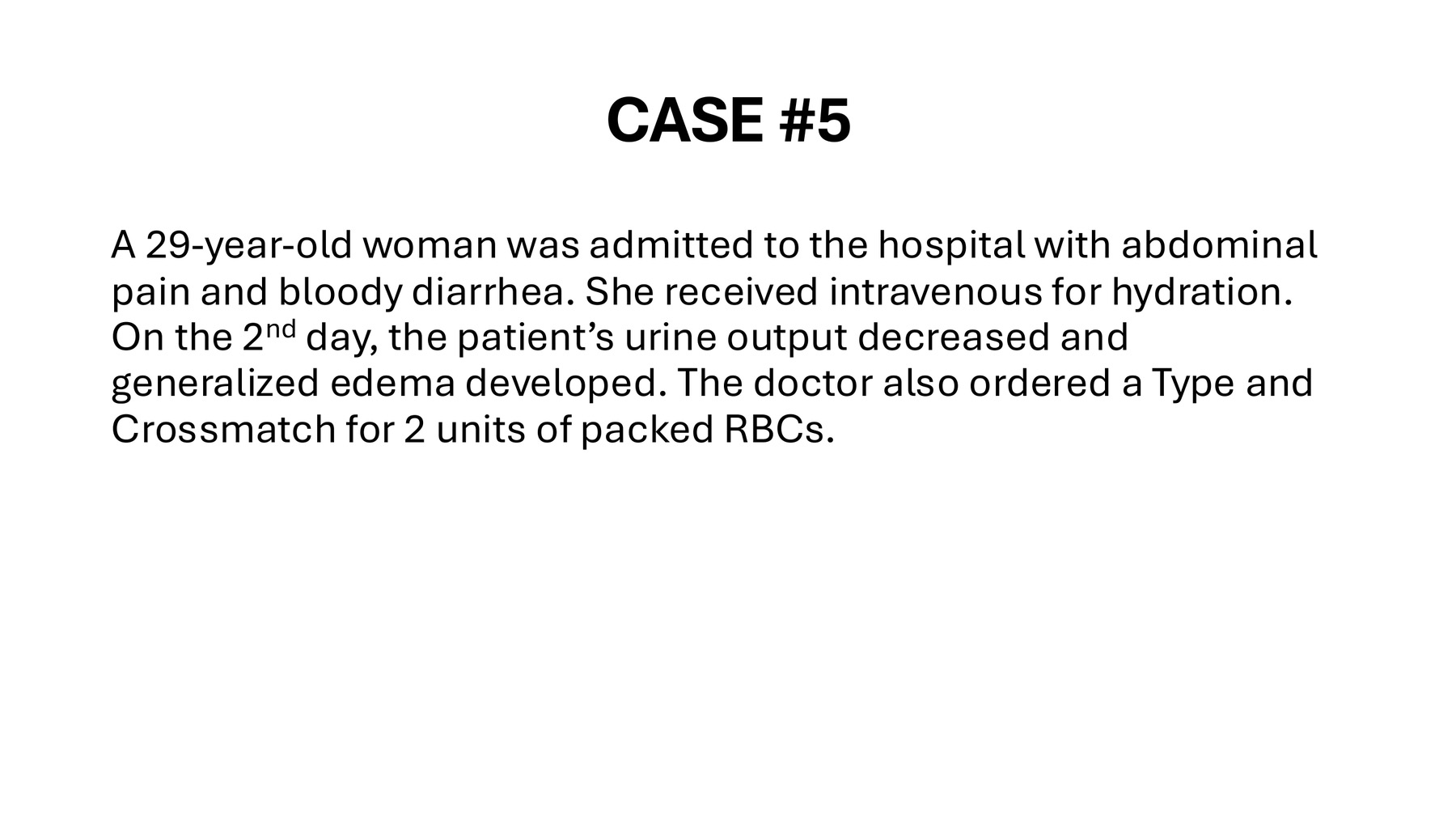
What tests would you do to rule out DIC, HUS, and TTP?
D-dimer for DIC
Stool Culture for HUS
ADAMTS-13 for TTP
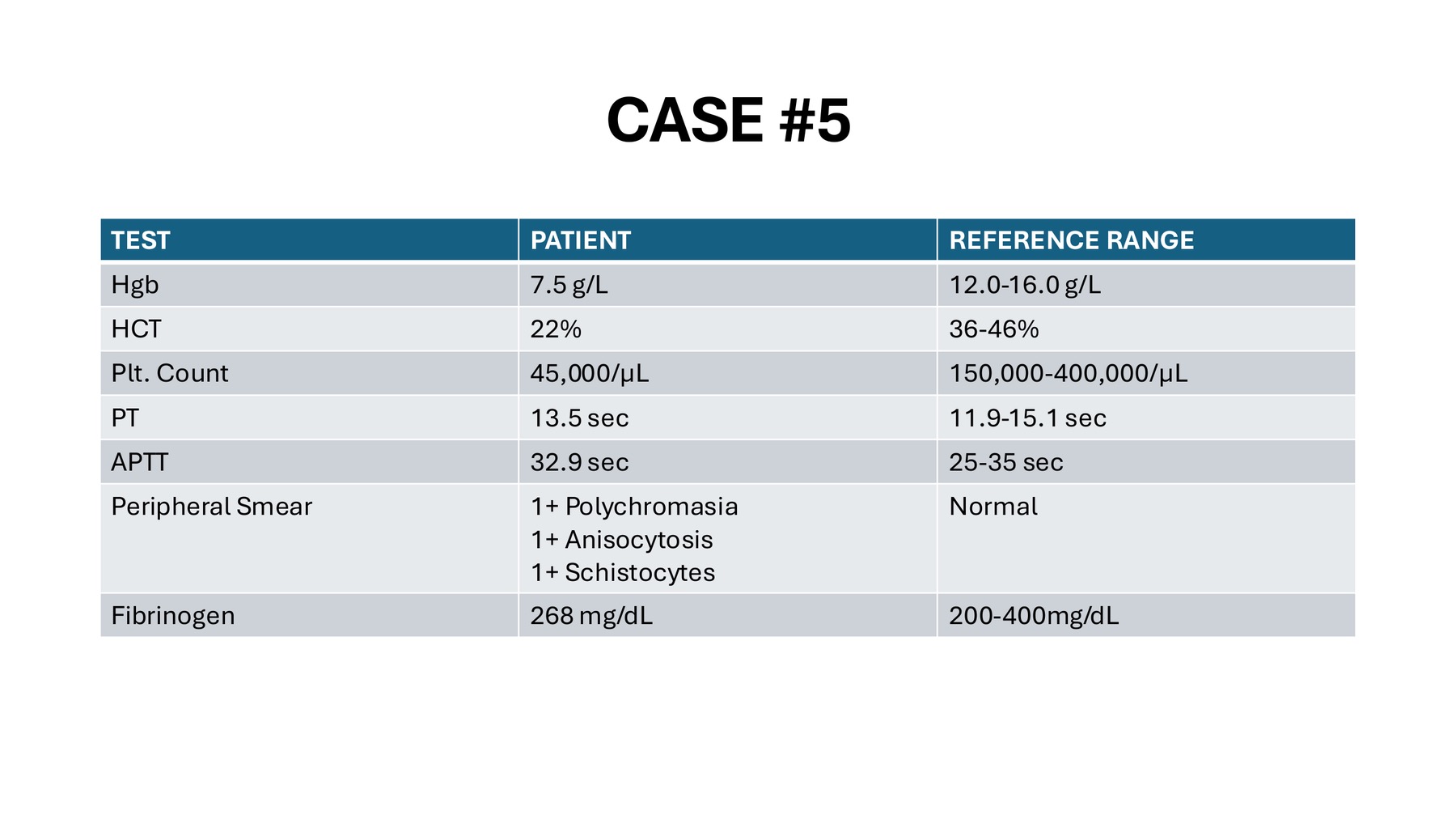
Stool culture came back positive for E.coli O157:H7, what is the diagnosis?
Hemolytic Uremic Syndrome (HUS)
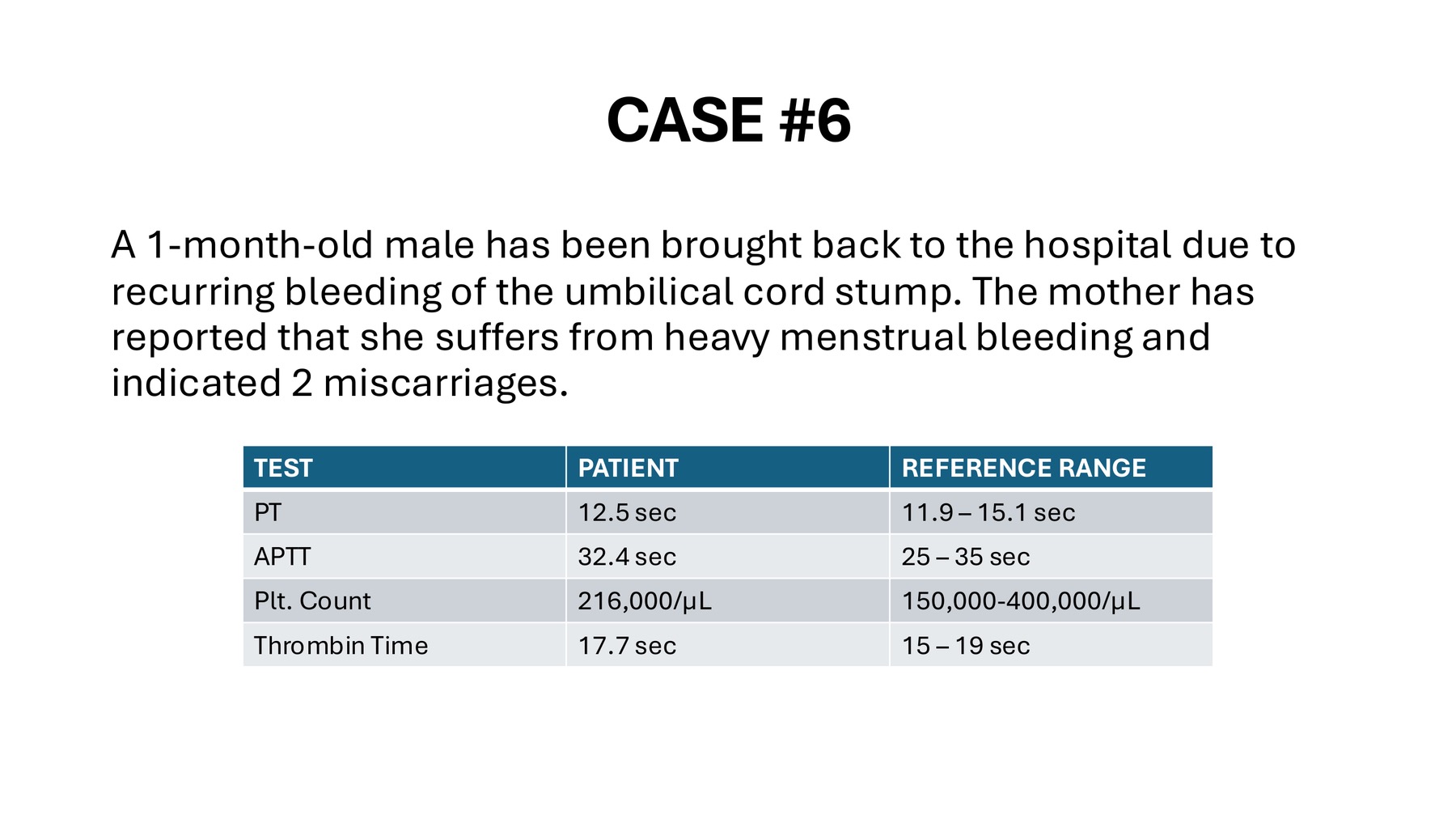
What factor deficiency has normal PT and PTT, even though the patient is bleeding?
Factor XII Deficiency

What 3 factor deficiencies would you see a prolonged APTT with no bleeding symptoms?
Factor XII Deficiency
HK Deficiency
PK Deficiency
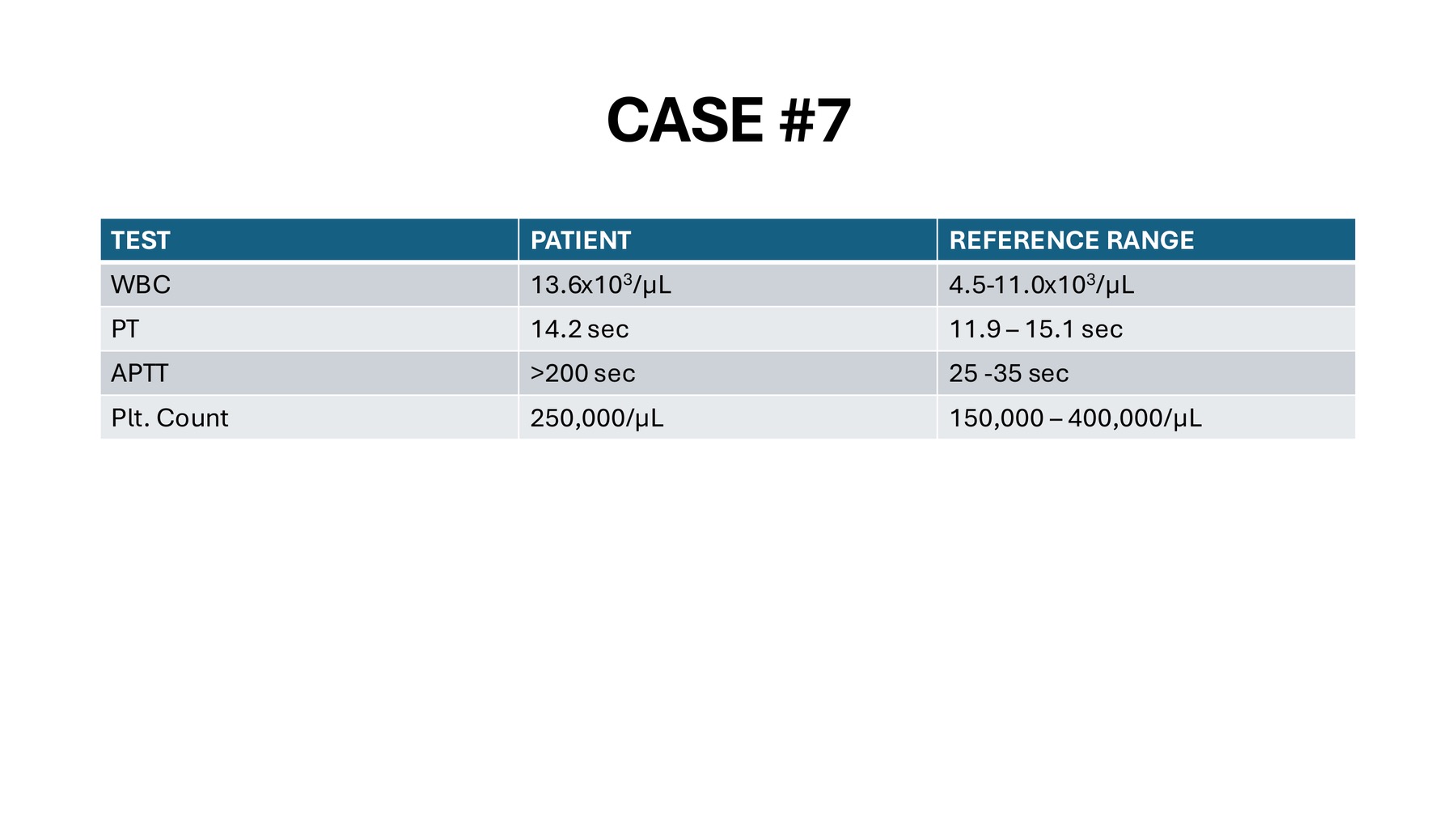
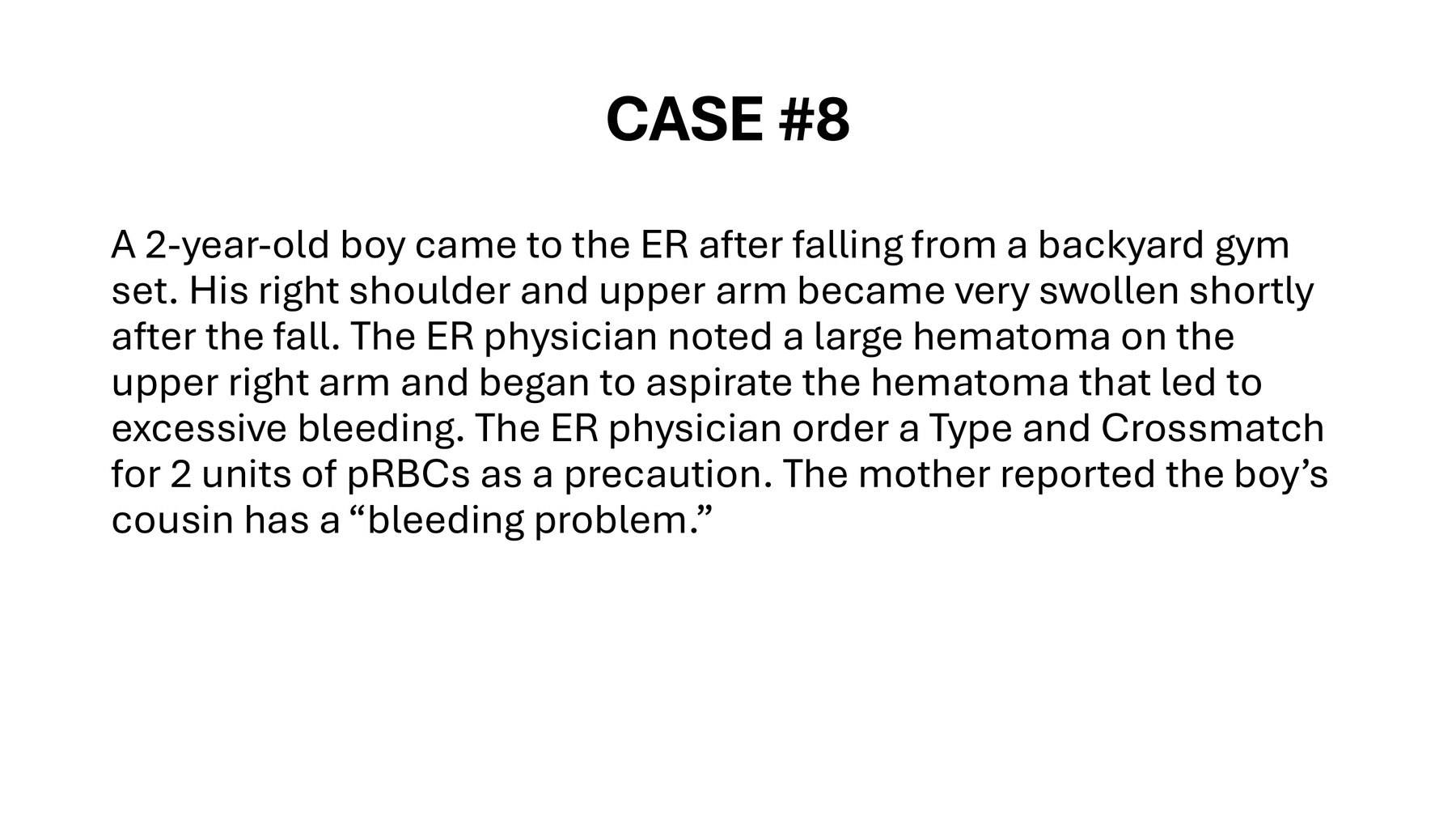
Inherited or Acquired
Inherited
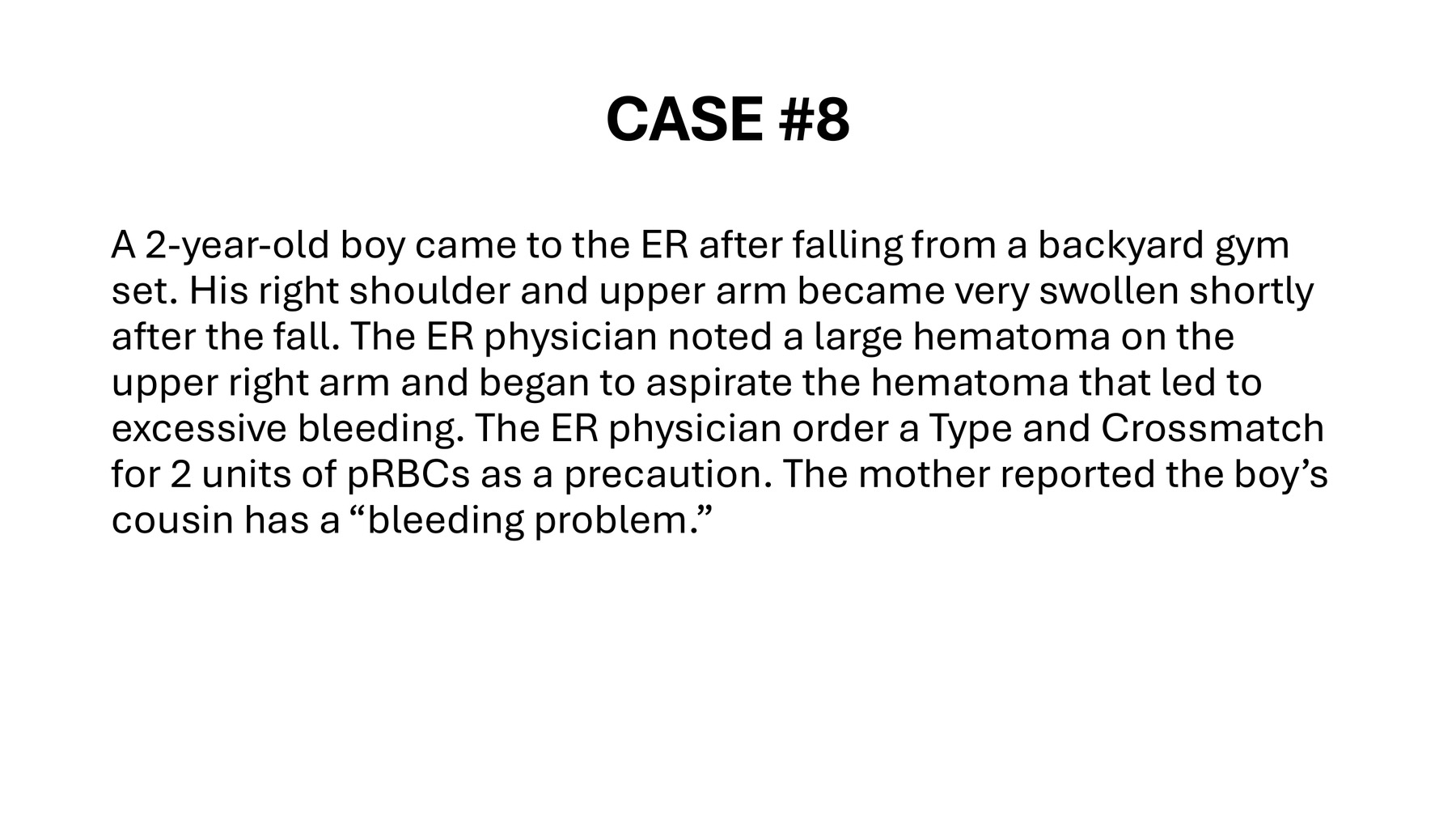
What type of disorder?
Secondary Hemostasis Disorder
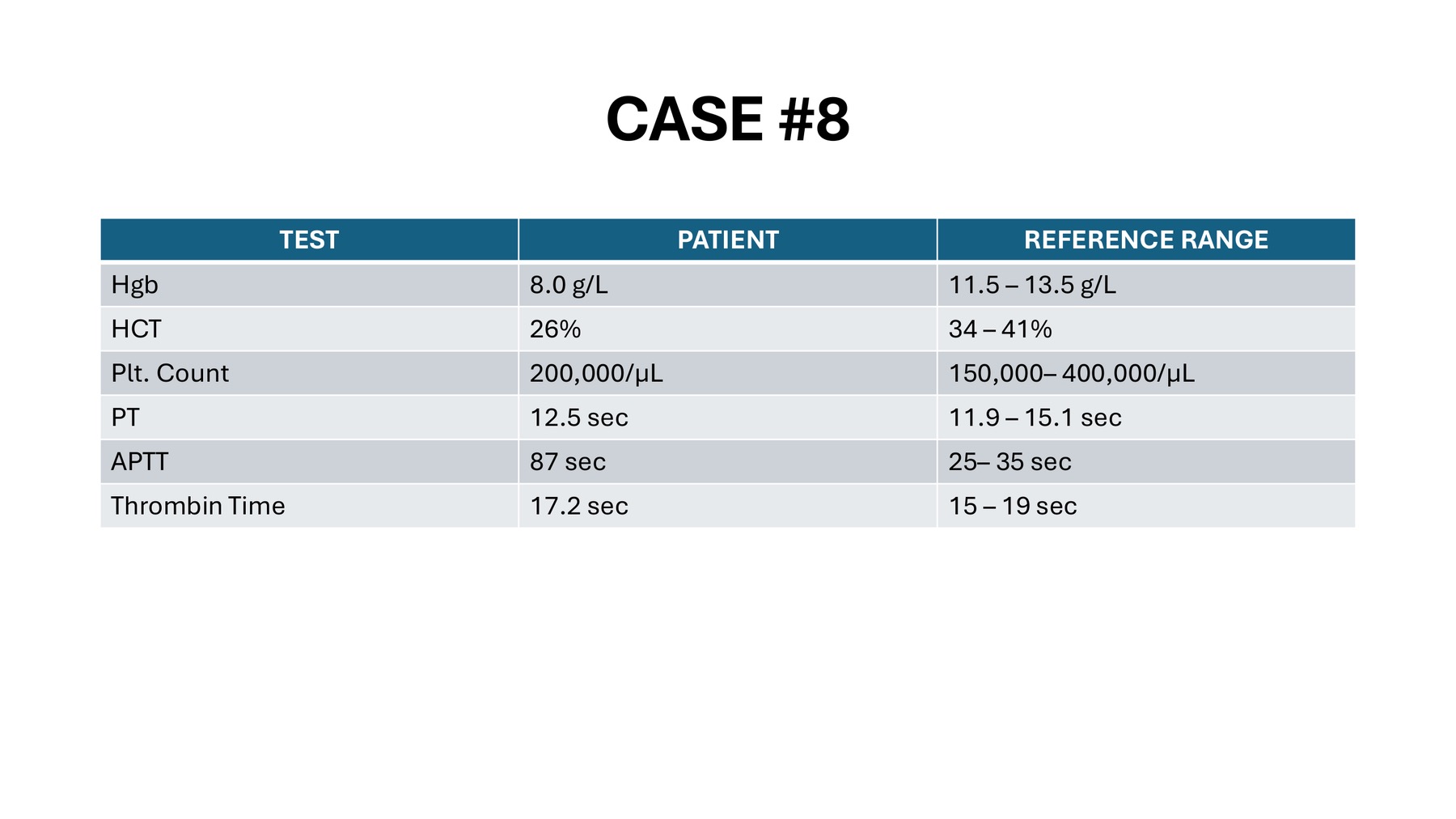
Which disease/deficiency do you need to rule out?
Von Willebrand Disease (vWD)
Hemophilia A
Hemophilia B
Hemophilia C
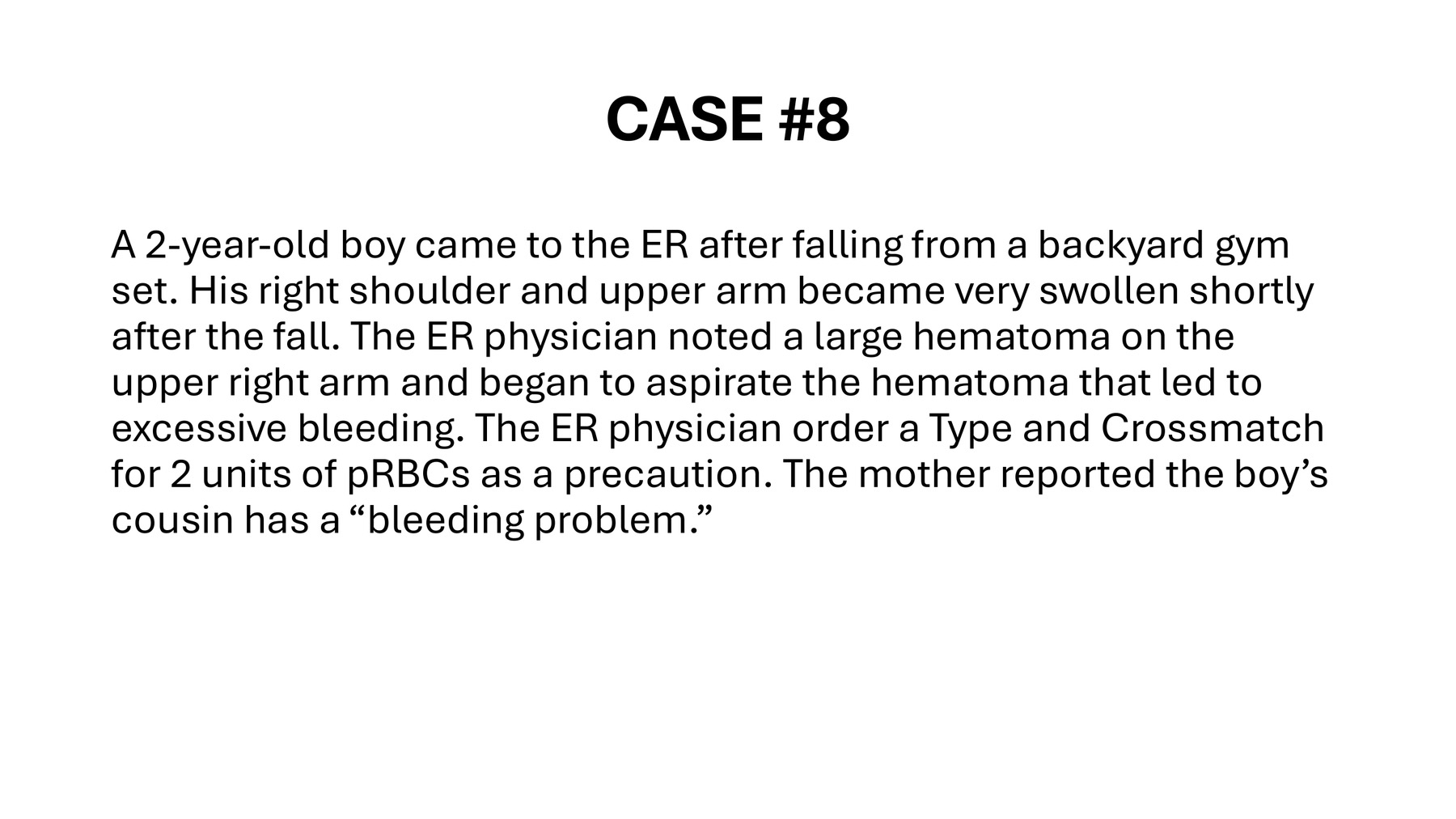
What tests would you order to rule out VWD, Hemophilias A, B, and C?
APTT Mixing Studies
vWF: Ag
vWF: RCo
Factor VIII Activity
Factor IX Activity
Factor XI Activity
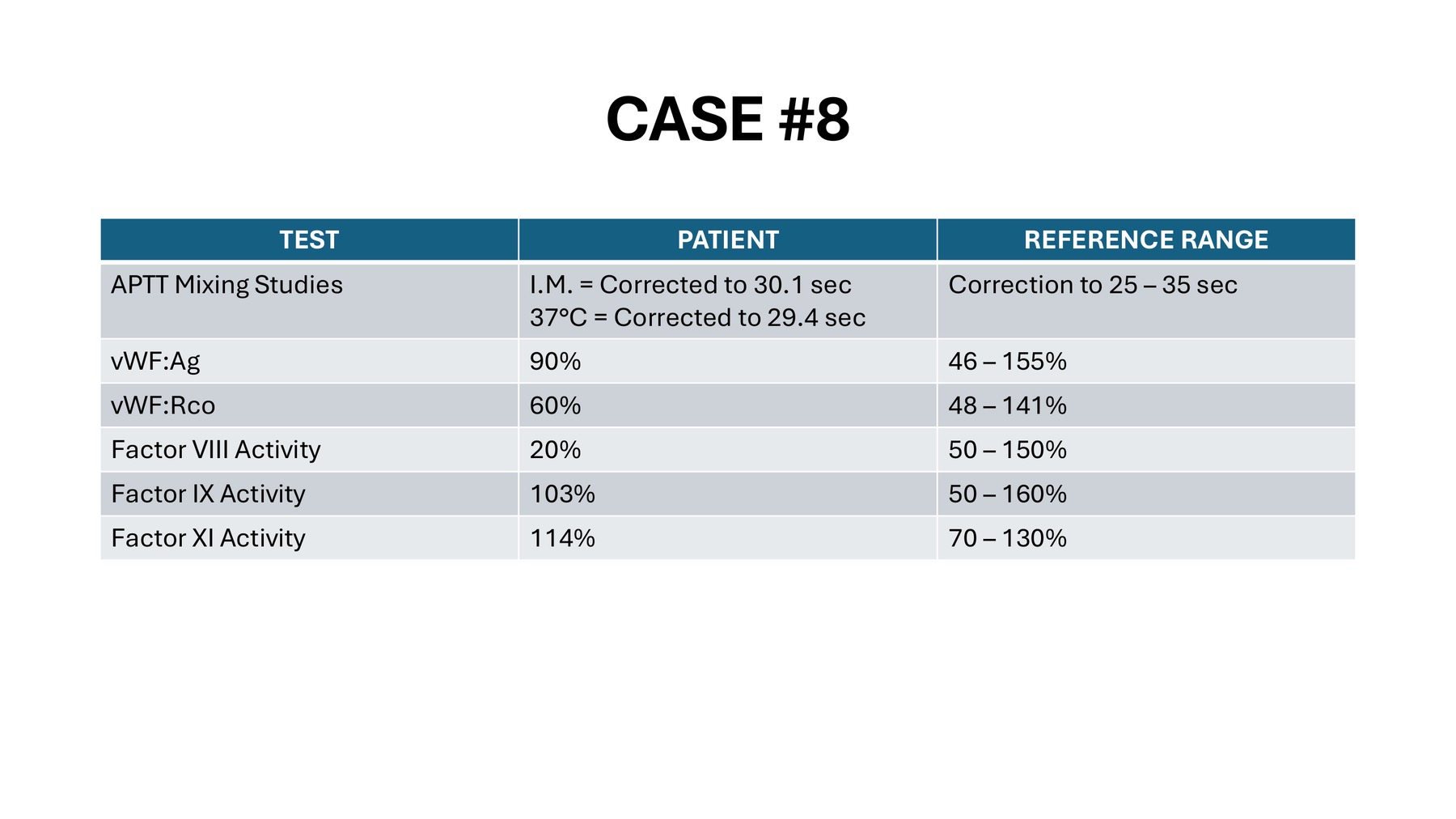
What is the diagnosis?
Hemophilia A

Is this an inherited or acquired disorder?
This patient has Antiphospholipid Syndrome (APS) which is an acquired disorder. APS is the most common cause of acquired thrombophilia.

What results would you see from a mixing study, PTT-LA, DRVVT?
Mixing Study: Immediate = Uncorrected, After Incubation = Uncorrected
PTT-LA: Prolonged
DRVVT: Prolonged

Which ones are the screening tests?
Screening:
Mixing Study
PTT-LA test
The standard DRVVT test with a lower phospholipid concentration acts as the screening test, showing a prolonged clotting time.

Which ones are the confirmatory tests?
Confirmatory: DRVVT with high concentration of phospholipids. The time should shorten because there are ore phospholipids that can neutralize the antibodies by providing a larger surface area, so the antibodies don’t interfere with the testing. The ratio is determined and if the ratio is greater than 1.3, it is positive.
Hexagonal Phase Phospholipid Test where the patient’s sample is incubated with and without HPE. HPE neutralizes the antibodies if present, resulting in a shorter clotting time using APTT methodology. The difference between the two samples is the result.

What is the treatment?
Heparin followed by oral anticoagulant